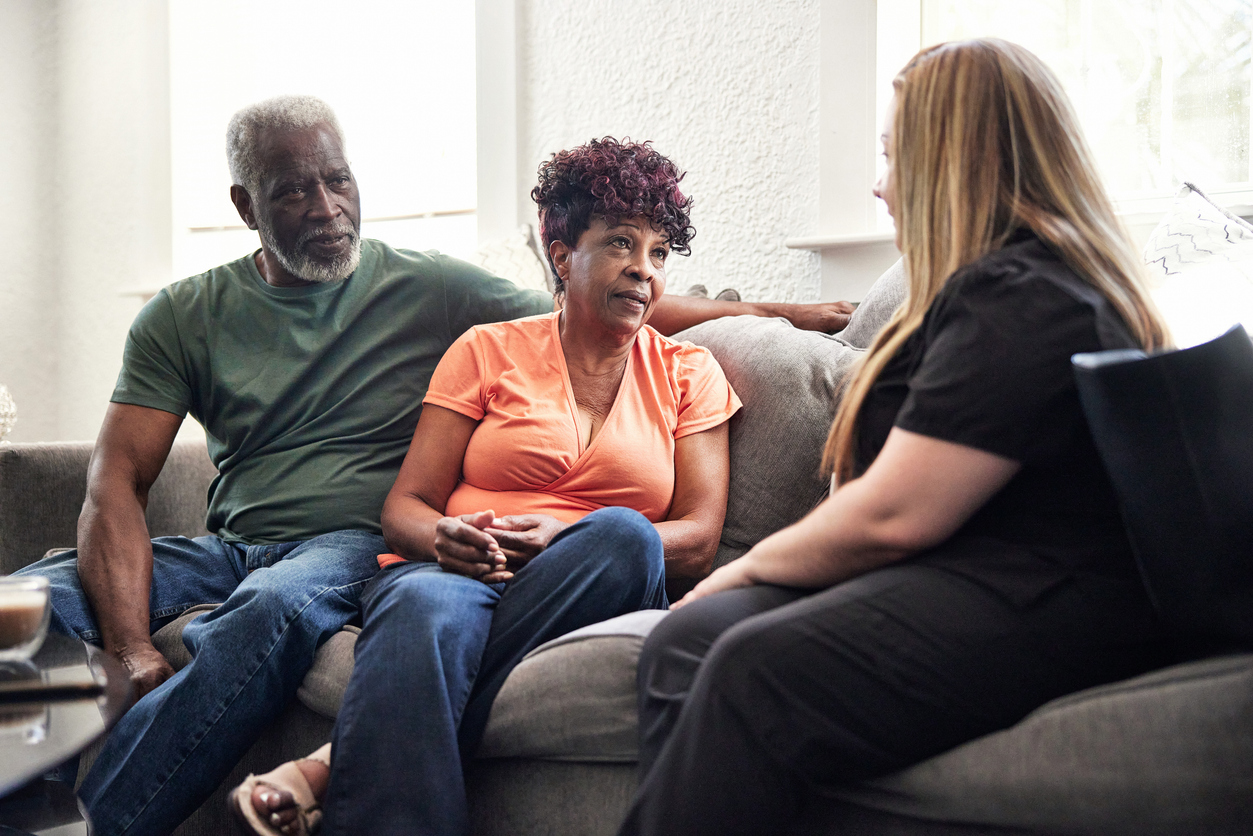Illness has a way of amplifying both the strengths and the strains in family relationships — sometimes bringing family members closer, sometimes reopening old wounds.
“When you’re caring for a loved one, all those old family dynamics come out — the patterns, the roles, the tensions,” says Eileen Pinoos, LICSW, a palliative care and hospice social worker at HopeHealth. “The goal is to work through that, so we can come together in the best interest of the patient.”
She shares four strategies to help families navigate caregiving with less conflict and more connection.
> Ask about palliative care for you or a loved one.
1. Expect old family patterns to reemerge.
Relationships can be many things at once — protective, demanding, compassionate, complicated. When serious illness enters the picture, it can bring out all this, especially the tougher dynamics.
“You may see old arguments come back,” says Eileen. “Old animosity, resentment, that feeling ‘Mom always liked you best’ — all of it tends to resurface.”
Tension between family members is especially difficult when families face big decisions about care, such as shifting from curative treatments to comfort. Those choices are emotional enough when everyone agrees. Add conflict, and it becomes even harder — for the family, and especially for the person who is seriously ill.
What helps: Talk about your loved one’s wishes early — and put them in writing. Advanced directives and living wills ensure future decisions reflect their exact desires, while easing disagreements among family members who might otherwise second-guess each other. Here’s a guide.
2. Lean on social workers to work through family conflicts.
When old wounds reopen or family disagreements feel overwhelming, turn to your care team’s social worker. Palliative care and hospice programs almost always include these experts, trained in mediate tough conversations and support families in countless other ways.
Social workers look for openings: Who in the family wants healing? Where can progress be made? And when conflict can’t be resolved, they help families move forward by focusing on the patient’s goals.
“We can’t change decades of history, but we can help reduce the tension,” Eileen says. “And when that’s not possible, we can bring the conversation back to: What are the primary goals for the patient? What’s best for them? How can we get there without activating more conflict? Even when families disagree, they almost always share the same hope — to do right by their loved one.”
What helps: Don’t wait for conflict to boil over. Invite your social worker into conversations early. They can anticipate challenges, offer resources, and help your family navigate tough decisions before tensions escalate.
> Read: How do palliative social workers help people living with serious illness?
3. Protect the primary caregiver.
Ideally, caregiving responsibilities are shared: One family member may handle finances, another care planning, another provide hands-on support.
In reality, though, most or all this work often falls to just one person. And that person needs support, too.
“Being a primary caregiver is a very difficult road,” says Eileen. “You’re always thinking and doing for two. Over time, you keep digging from your own well of energy and well-being. That’s when fatigue sets in — and the danger of losing yourself in the process.”
What helps: Encourage the primary caregiver to take breaks and small moments of respite. “Even a 10-minute meditation in the morning or five minutes on the porch in the sun can help caregivers recharge,” says Eileen. Look for ways, big and small, to lighten their load.
4. Seek small joys together.
Illness often reverses familiar roles. “For adult children who are caring for a parent, it’s about honoring their role as your parent — giving them dignity — while slowly taking responsibility for their needs,” says Eileen. “For spouses and partners, you’re also grieving the relationship as it once was, while still caring for the loved one who’s right in front of you.”
In the midst of these shifting dynamics, look for ways to recreate familiar joys.
“Your loved one is still there in front of you. They’re changed, but they’re still there,” Eileen says. “What did they enjoy on his or her own? What did you enjoy together with them? The key is to bring back those things in some way.”
For example, you might set aside time each day to:
- Listen to favorite music together
- Share a morning cup of coffee or tea
- Watch a TV show you’ve always loved
- Sit outside in the garden
- Practice gratitude by naming one thing you appreciate in the moment
What helps: Keep rituals short and simple. Aim for 10 minutes. “It’s about creating moments of connection, not adding one more thing to a caregiver’s to-do list,” Eileen says.
The takeaway
Caregiving will always reshape family dynamics — sometimes in stressful ways, sometimes in deeply meaningful ones. Whatever you’re facing — connection, change, conflict — try to take it one step at a time.
“Caregivers feel like they have to have all the answers,” Eileen says. “But the truth is, you don’t. This is a journey — and the answers come as you go along.”
Your palliative care or hospice team is here to help.
“We can’t erase every challenge,” says Eileen, “but we can help your family find moments of peace, even in the hardest times.”

